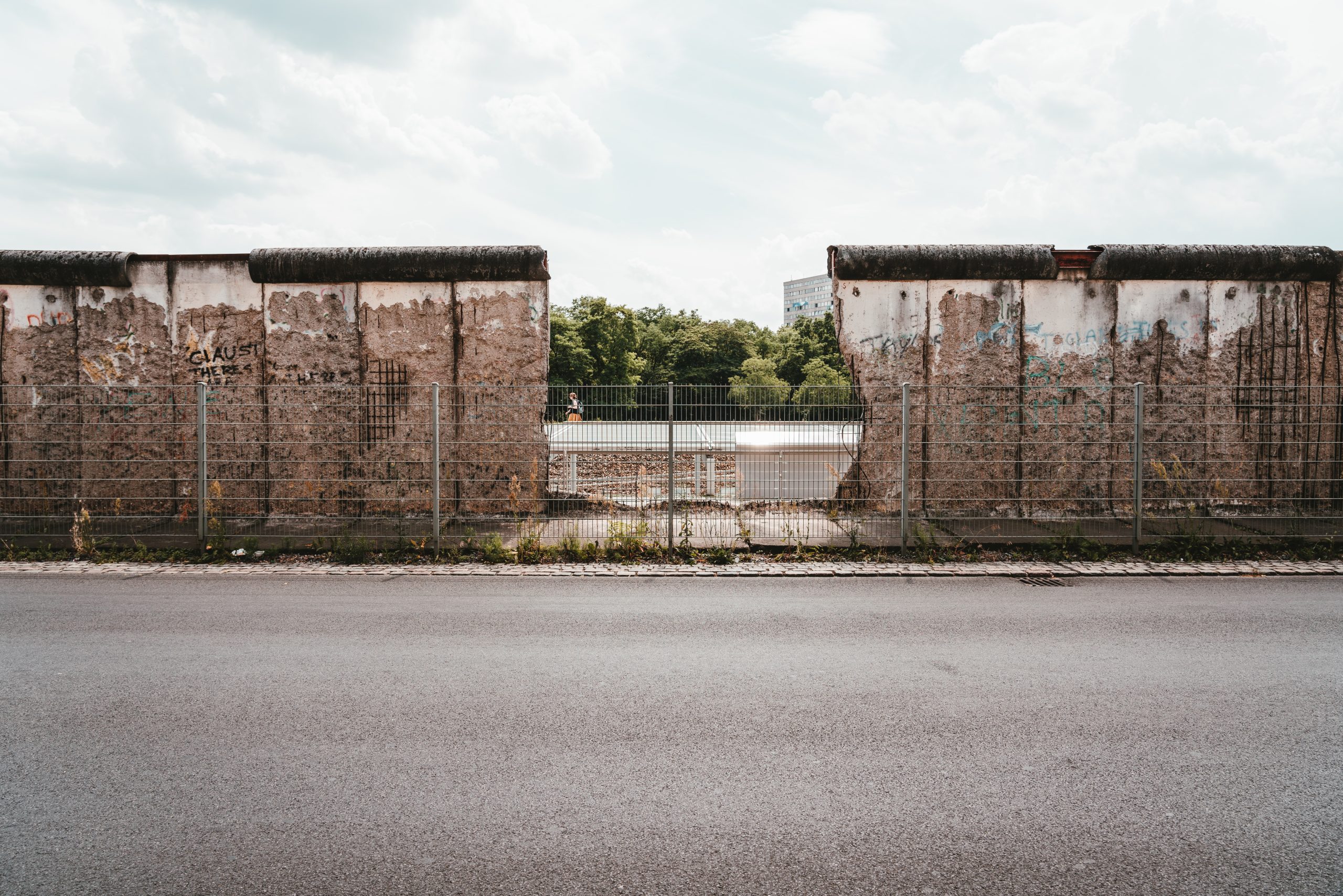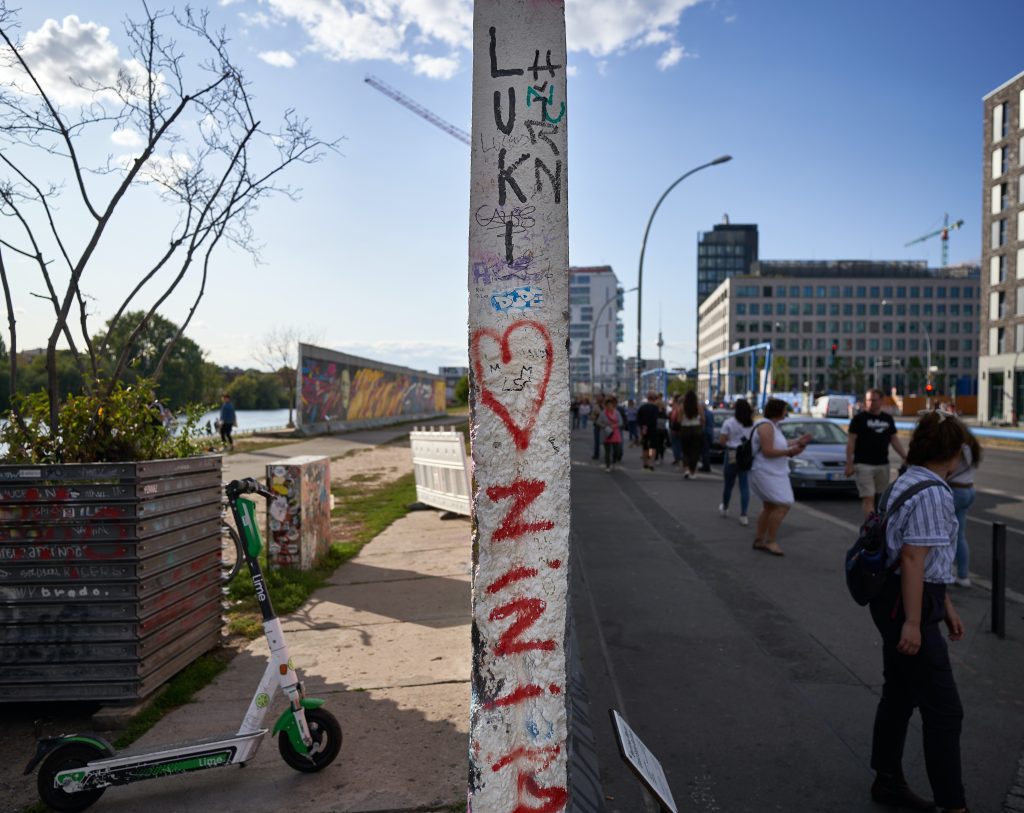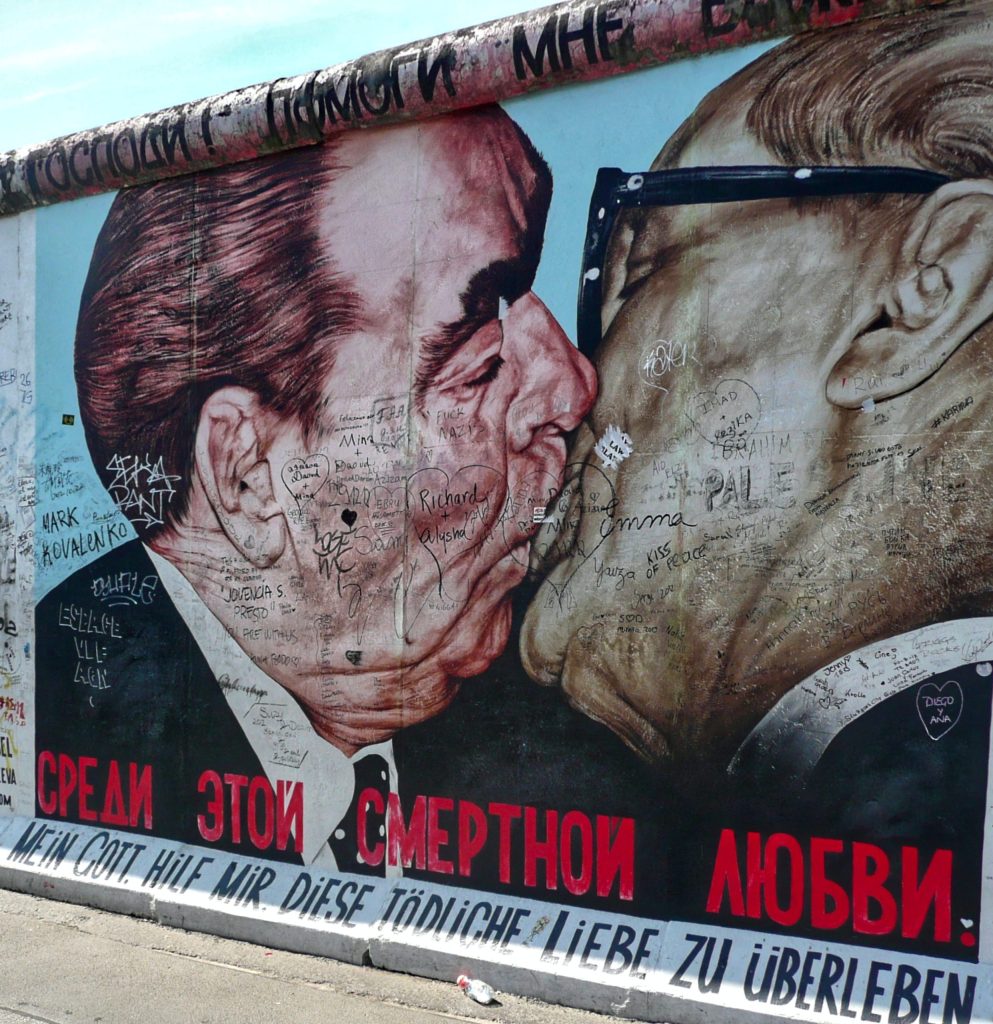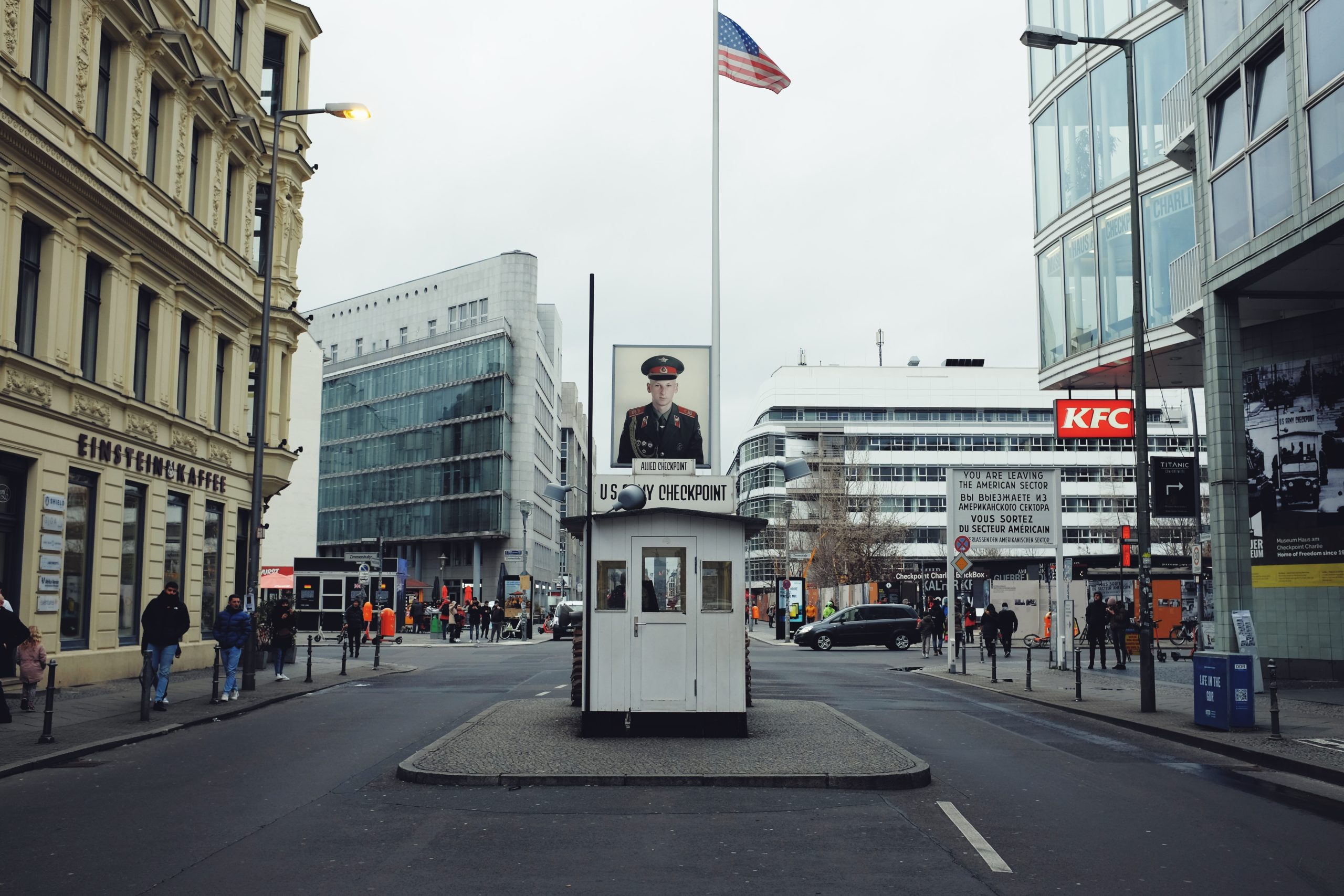
The Berlin Wall separated East and West Berlin between 1961 and 1989 – it prevented GDR residents from leaving their country. How does the wall still influence Berlin and its culture today?
Billboard
Skyscrapper
Halfpage
Hard to believe: Out of all cities, a wall separated Berlin in two just about thirty years ago. Today, the capital is the junction of cultural diversity and awakening, not only in Germany, but the world. Time to have a look at the Berlin Wall and its memorial.
The four sectors of Berlin
For over 28 years, a wall divided Berlin into East and West. The wall separated families and friends, and even beyond that the wall brought suffering and pain: At least 136 people lost their lives trying to escape from East to West. When the Berlin Wall fell on 9 November 1989, the euphoria was great. Border fortifications quickly disappeared, and the Wall disappeared piece by piece: Today, only a few relics of the Wall remain in Berlin.
Medium Rectangle
Halfpage


The party leader of the GDR-government built the Wall in 1961, but to understand its history it is necessary to look back a little further. During the Second World War, the Allied forces already decided to divide Germany into occupation zones after its defeat. The USA, Great Britain, the USSR and France were the Allies. In August 1945, they decided in Potsdam what the four zones of Germany and the four sectors of Berlin would look like.

Secret construction of the Berlin Wall on 13 August 1961
With the beginning of the Cold War, the western zones and the eastern zones developed very differently. In May 1949, the Allies founded the Federal Republic of Germany in the western part of the country. The following October saw the foundation of the German Democratic Republic (GDR). To avoid too many border crossings to the west, the GDR soon began to monitor the borders. The inner-German borders were notoriously difficult to cross, but within Berlin there were still good escape routes from East to West. However, it was a thorn in the side of the Soviet leadership that with West Berlin there was a “splinter” in the heart of the GDR.

“Nobody intends to build a wall”
The year 1961 was decisive for the construction of the Berlin Wall. From the spring onwards, the economic situation in the GDR deteriorated rapidly. This led to a much greater flow of refugees towards West Germany. After a conference with the USA, the Soviet Union as well as the head of the Socialist Unity Party (SED), Walter Ulbricht, announced as late as June 1961: “Nobody intends to build a wall.” However, rumours of a lockdown in West Berlin quickly grew.
On 13 August 1961, the time had come: Armed groups, police and soldiers built a barrier of concrete and barbed wire across the city. This ran along the sector border between West and East Berlin. In total, the Wall around West Berlin was 156.4 kilometres long, of which 43.7 kilometres ran directly along the sector border.

Enthusiastic demolition of the Berlin Wall
When the building of the Wall in 1961, the government cut off all traffic routes between West and East Berlin. Within a few days, it completely sealed off the western part of the city. The Wall was secured with entire enclosures with barbed wire and the “death strip” with mines, that powerful floodlights illuminated at night. Watchtowers aided observation. With that, the Wall sealed East Berlin completely off from the West. Families and friends had to tear apart and could not see each other for decades. The Wall was insurmountable – but many people still tried to flee the GDR. They risked their lives in the process and at least 136 were shot.
On the night of 9 to 10 November 1989, the Wall came down as the result of misunderstandings in the SED leadership. In fact, however, preceding events such as the demolition of the Wall between Austria and Hungary in May 1989, the flight of GDR citizens to the West via embassies of the Federal Republic in Prague, Warsaw and Budapest, and the Monday demonstrations in Leipzig were also important factors.
The opening of new border crossings allowed the flow of people, banishing the completely unprepared border personnel. Berliners and visitors tore down the Wall partly with their own hands. Officially, the demolition of the inner-city Wall ended at the end of November 1990. The last segments disappeared in November 1991.
Medium Rectangle
Halfpage


Joy and remembrance of the fall of the Wall
Today, some of the Wall segments are still in Berlin, but also in other places around the world. For example, there are still sections of the Vatican Gardens, in the House of History in Bonn and in the CIA’s new building in Virginia, USA.
In Berlin, a memorial ensemble to the Berlin Wall is on Bernauer Strasse between the districts of Wedding and Mitte. This includes a memorial, a documentation centre and the Chapel of Reconciliation. There is also a history mile in the form of a permanent exhibition in four languages. It has 31 stations and runs along the inner-city Wall path. Photographs and texts illustrate important events in the history of division, the building of the Wall and the opening of the Wall. A double row of paving stones and cast-iron plaques mark the former course of the Wall in Berlin’s inner city.
Along Mühlenstrasse in Friedrichshain is the East Side Gallery. This piece of the Berlin Wall was painted in 1990 by 118 artists from 21 countries. The art expresses the joy over the fall of the Wall. This can also be seen in the Palace of Tears: This former clearance hall for people leaving East to West Berlin offers a permanent exhibition called “GrenzErfahrungen. Everyday life in the German division”.
Medium Rectangle
Halfpage


A strong culture of remembrance
Today, only 1.5 kilometres of Wall remains can be found in Berlin. Nevertheless, history is omnipresent. For example, there is the Berlin Wall Trail, a 160-kilometre hiking trail around and through Berlin. It is made for pedestrians and cyclists and largely follows the former route of the GDR border troops and their patrols around West Berlin.
Checkpoint Charlie, a well-known inner-city checkpoint on Friedrichstraße, is also an important sight in Berlin as well as a copy of the checkpoint barracks.

A piece of the original Wall also still stands on Niederkirchnerstraße between Martin-Gropius-Bau and the Federal Ministry of Finance. It belongs to the grounds of the “Topography of Terror” exhibition. Here it is easy to see how many pieces the Berliners had cut out of the Wall after it fell. To this day, the trade in Wall pieces is flourishing, because the culture of remembrance is strong.












